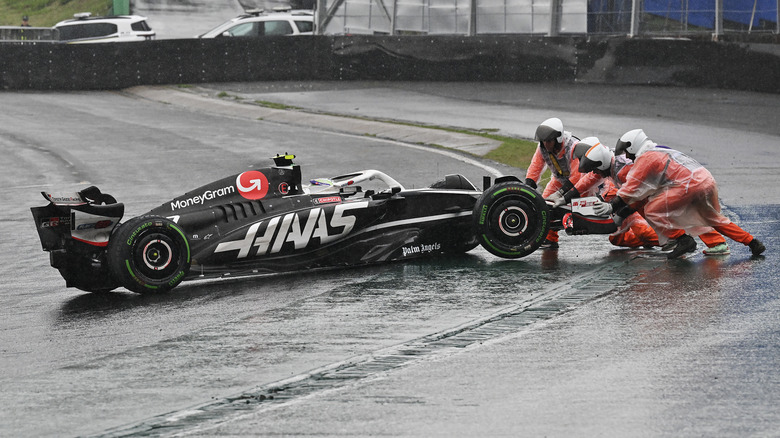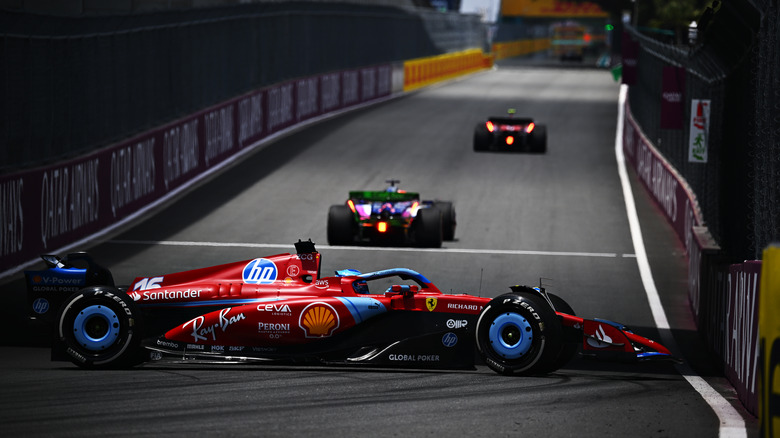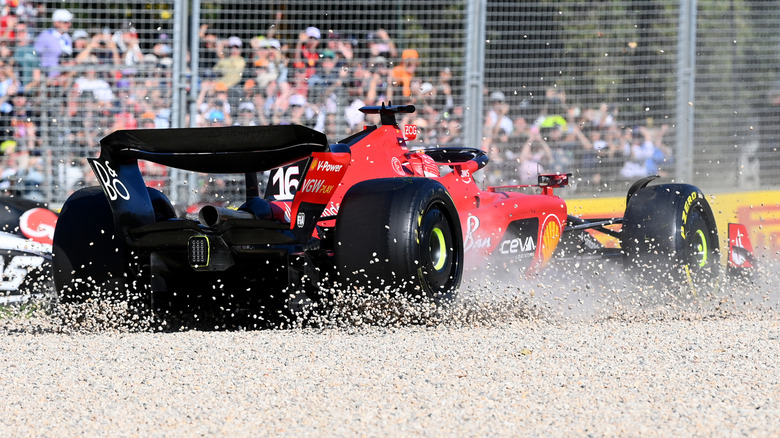
If you've ever watched a Formula 1 race and seen a car beached in a run-off area, you might've wondered: Why doesn't the driver just throw it in reverse and back out like the rest of us? It's a fair question. After all, every F1 car is required to have a reverse gear as per the Federation Internationale de l'Automobile (FIA) guidelines. But that doesn't mean it's easy to use.
F1 cars are optimized to go forward really, really fast. Everything from the gearbox to the aero to the driver's seating position
is built around speed in that direction. Reverse is technically there, but it's more of a formality than a functional feature. Unlike a regular car's whiny reverse gear that's easily slotted on a manual, on an F1 car, it usually requires a multi-step process to engage. Think slotting into neutral, then clutch input, hold down a paddle shifter, then a button, and a prayer.
Read more: These Are The Worst Transmission Recalls Of The Last 5 Years
Reverse Isn't Part Of The Plan

In most race situations, reversing is a last resort. The driver may be either stuck in a wall, nose-first into a gravel trap, or trying to get turned around in a tight escape road. Problem is, the car isn't built for that. F1 cockpits have terrible rear visibility. The driver is seated so low, basically lying down, surrounded by bodywork, with mirrors the size of credit cards. Add a Hans device and a helmet, and it's probably easier to back up a school bus. If you think reversing a GMC Sierra at night is difficult with a useless backup camera, imagine being strapped in an F1 car with no reversing aids.
And of course, there are the rules because F1 never misses a chance to complicate things. FIA rules flat-out ban reversing under power in the pit lane, so forget about backing up there. But even on track, reverse is more of a technical headache than a useful tool. At the 2021 Emilia Romagna Grand Prix, Lewis Hamilton found himself beached and fumbling with the controls. "It just wouldn't go into reverse," he said, Motorsport reports, after holding the button for what felt like "forever." On his Mercedes, the reverse is hidden behind the neutral button with a timed hold. Not exactly intuitive in a panic. If you don't use it often, good luck remembering how it even works.
Precision Forward, Awkward In Reverse

The gearbox in an F1 car is an incredibly precise piece of kit, designed for rapid gearshifts. But that precision doesn't love going backwards. Reverse is rarely used and isn't reinforced like the forward gears, so teams aren't keen on drivers hammering it unless absolutely necessary. There's a real risk of stalling the car or damaging the drivetrain leading to loss of time and possible impact on the race results due to retirement.
Ultimately, reversing an F1 car is less about the mechanics of it and more about design priorities. These machines are built to go fast, not to parallel park. Apart from being necessitated by the rules, the reverse gear engagement in an F1 car is a fairly complex procedure. So the next time you see a driver waving for a marshal after a spin, remember, it's not that they forgot the reverse gear exists, just that using it is about as graceful as doing ballet in ski boots.
Want more like this? Join the Jalopnik newsletter to get the latest auto news sent straight to your inbox...
Read the original article on Jalopnik.












